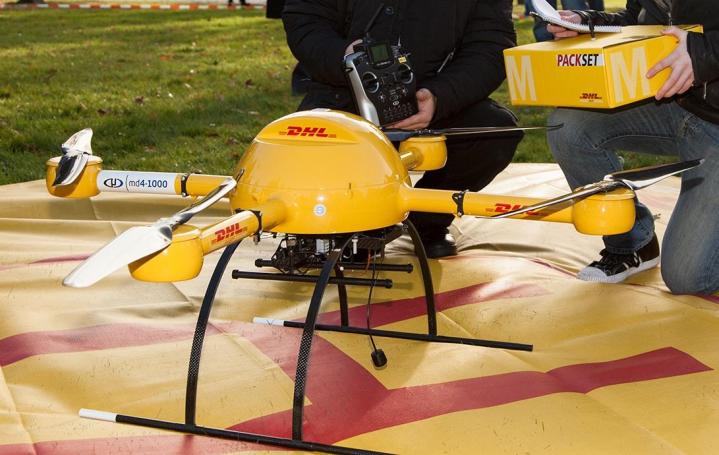
Admittedly, it’s a very limited launch, with DHL’s unmanned aerial vehicle (UAV) initially transporting medication and other urgent supplies from the German mainland to the tiny island of Juist in the far north of the country.
DHL has been trialing its system for nearly a year using its ‘parcelcopter,’ and this latest step forms part of its ongoing research into this type of delivery.
Related: Amazon presses ahead with delivery-by-drone initiative
Juist, which lies 12 km from the mainland and is home to around 1500 people, has no bridge and is currently served by a daily ferry service and occasional flights. DHL will fly its yellow quadcopter between Juist and the mainland for at least the next month, the company said in a release.
The delivery firm’s quadcopter can hit speeds of 40 mph (65 km/h) and carry loads of up to 2.6 pounds (1.2 kg).
Although monitored by a mobile ground station, the 15-to-30-minute flight is entirely automated. The drone will land in a designated spot, with an island representative waiting to collect the on-board supplies.
DHL was able to obtain permission from the authorities to run its drone delivery service because the route takes the flying machine coast to coast, avoiding residential areas altogether.
As with many countries, concern over safety means drone flights in Germany are banned in populated areas. And with DHL’s flying machine weighing more than 5 kg, it’s not hard to imagine the kind of damage it could cause if it fell from the sky.
Amazon and Google are also working on similar projects, with the former hoping to one day deliver purchased goods to customers living close to its fulfillment centers. Google’s project, on the other hand, appears to be more focused on carrying urgent supplies to locations hit by natural disasters, though it hasn’t ruled out the idea of one day using the technology to deliver products to shoppers.
However, with the technology still in development, and a bunch of regulatory hurdles to clear, it’s not thought either service will be launching anytime soon.
[Source: DHL, Reuters] [Image: Frankhöffner / Wiki]
Editors' Recommendations
- Best Prime Day Drone Deals 2022: What to expect this week
- Drone delivery: Medical supplies will soon be flying around San Diego
- Flying meds: UPS uses drones for deliveries to CVS customers for first time
- UPS gets FAA clearance to roll out a fleet of delivery drones
- Google’s Wing delivery drones will soon ship packages for FedEx and Walgreens


